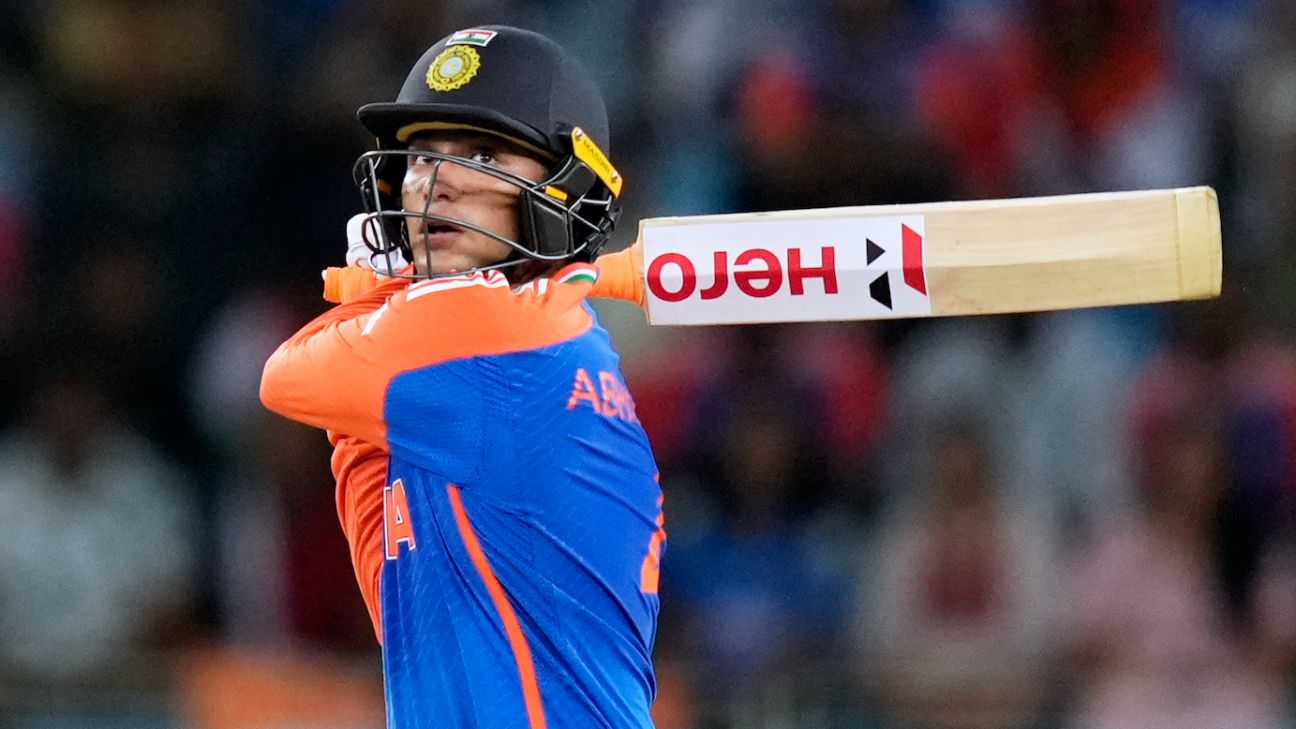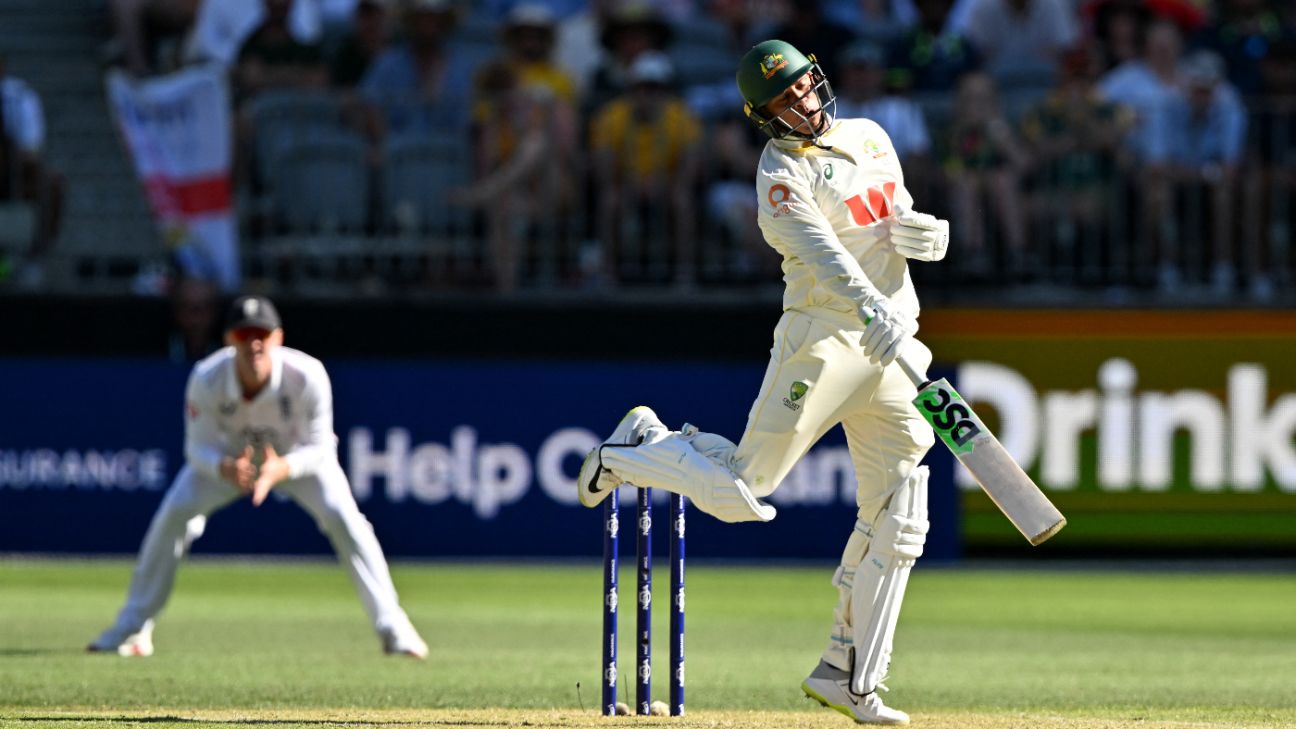Cliff Notes – Jasprit Bumrah, Smriti Mandhana named as Wisden’s Leading Cricketers in the World
- Jasprit Bumrah has been recognised as the Leading Men’s Cricketer in the World for 2025, following a historic performance in 2024 where he became the first Test bowler to take 200 wickets at an average below 20.
- Smriti Mandhana was named the Leading Women’s Cricketer in the World, scoring a record 1659 runs across formats in 2024, including four ODI centuries and a Test century against South Africa.
Jasprit Bumrah, Smriti Mandhana named as Wisden’s Leading Cricketers in the World
Jasprit Bumrah, India’s all-formats fast bowler, has been hailed as the Leading Men’s Cricketer in the World in the 2025 edition of Wisden Cricketers’ Almanack, which is published on Tuesday.
Bumrah, who capped his performances in 2024 by becoming the first Test bowler in history to claim 200 wickets at an average of less than 20 each, is described by Wisden’s editor Lawrence Booth as “quite simply the star of the year”. In total, he claimed 71 Test wickets at less than 15 each, while also bowling India to glory in the T20 World Cup in the Caribbean in June.
Reflecting on Bumrah’s immense performance in the Border-Gavaskar Trophy in Australia, in which he almost single-handedly carried India’s attack with 32 wickets at 13.06, Booth wrote: “He was so lethal, so uniquely challenging – a stacatto of limbs somehow forming a symphony – that runs scored off him should have counted double … he laid a claim to be considered the greatest of all time.”
Bumrah’s compatriot, Smriti Mandhana, made it an India double by being named as Wisden’s Leading Women’s Cricketer in the World. Mandhana scored 1659 runs across formats in 2024 – the most by a woman in a calendar year of international cricket – including four ODI hundreds, which was another record. She capped her efforts with a second Test century, 149, in a ten-wicket win over South Africa in June.
Nicholas Pooran was named as the Leading T20 Player in the World, while there was a strong Surrey theme to Wisden’s oldest awards – the Five Cricketers of the Year, an honour that a player can only win once in their career and which are judged by their performance during the English home season.
Three of the players who helped land Surrey their third consecutive County Championship title – Gus Atkinson, Jamie Smith and Dan Worrall – are named among this year’s quintet, while Hampshire’s Liam Dawson and Sophie Ecclestone, England Women’s left-arm spinner, complete the set.
Australia-born Worrall, who qualifies as an England player this summer, was central to Surrey’s success, claiming 52 wickets at an average of just 16 with his accurate, aggressive seamers. For Atkinson and Smith, however, their most notable performances came in their maiden summer as Test cricketers.
Atkinson was England’s breakout star of the year, particularly at Lord’s, where he claimed 12 wickets on debut against West Indies, then a second five-for as well as a remarkable maiden century from No. 8 against Sri Lanka later in the summer. A hat-trick against New Zealand at Wellington helped him to 52 wickets at just 22 each in his first year as a Test cricketer.
Harry Brook features on the front cover of the 2025 Wisden Cricketers’ Almanack John Wisden & Co
Dawson, meanwhile, claimed 54 Championship wickets for Hampshire with his left-arm spin, and scored 956 runs at almost 60, with Booth stating that “there was no more effective all-rounder in county cricket“.
Ecclestone, who endured a difficult winter at the T20 World Cup and the Women’s Ashes, nevertheless excelled in England’s unbeaten home summer. In addition to becoming her country’s leading wicket-taker in T20Is, she contributed 26 wickets across formats at under 10 each, and proved impressively frugal, conceding her runs at less than three an over.
The Wisden Trophy for the year’s outstanding performance went to New Zealand’s Mitchell Santner. He claimed a matchwinning 13-wicket haul against India in the second Test at Pune, as New Zealand sealed an unassailable 2-0 lead in their Test series against India. Not only was this India’s first home series defeat since December 2012, the Kiwis also went on to claim a 3-0 whitewash, making it one of the greatest series wins of all time.
In his annual Notes by the Editor, Booth takes aim at the sport’s global governance, labelling 2024 as the year “cricket gave up any claim to being properly administered”.
In particular, he highlights Jay Shah’s overnight switch in December from honorary secretary of the BCCI to the role of ICC chair, even while the two boards were still at loggerheads over the venue allocations for the Champions Trophy that was due to be hosted by Pakistan in February.
Booth also urges the ICC to devise a World Test Championship that is fit for purpose, describing the upcoming final between Australia and South Africa at Lord’s as a “shambles masquerading as a showpiece”.
And while he congratulates the ECB on the windfall generated by the recent Hundred equity sale – with an anticipated £29 million set to be allocated to each of the 11 non-host counties – Booth adds a note of caution.
“If The Hundred is to be judged solely on the bottom line, the ECB deserve a pat on the back … but, amid the jubilation, there was still – just about – room for scepticism. No matter how well the non-host counties have done from the arrangement, the gap with the host counties will eventually grow. And, though the ECB hope to expand the competition, what happens if the initial investment runs out? We are heading for utopia or dystopia, depending on your view.”
This year’s Almanack also salutes James Anderson, who retired from Test cricket in July after 21 years and an England record 704 wickets, and pays tribute to two greats of English cricket who died in 2024.
Derek Underwood is remembered by his former England captain, Mike Brearley, while Graham Thorpe, who tragically took his own life in August, is the subject of a moving piece by his widow, Amanda, who opens up on his mental-health struggles.
“It’s so hard for those of us who do not suffer from this to understand how and why it occurs,” Amanda Thorpe writes. “For it to happen to Graham, who was essentially a happy person, is a lesson for us all. He tried many therapies and medications – he tried so hard to beat it… He also felt immense shame about how he was, but of course there should be no stigma to suffering as he did. Having watched it play out, I could see it is a physical illness – and it is real. It felt like he was in the grip of a sickness he just couldn’t get out of.”





